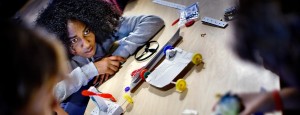
Students do not come to school as a ‘tabula rasa’. They bring ideas or conceptions about scientific phenomena into the science class that are not always in agreement with our current understanding of natural science. These alternative conceptions are often referred to as ‘misconceptions’. Usually such misconceptions are robust, very resistant to change, deeply rooted in everyday experience, and rather useful in explaining everyday life phenomena.
Misconceptions are ideas that are not in agreement with our understanding of natural science. A familiar example of misconception that teachers hear from students is the idea that gases are not matter because they are invisible and they have not mass.
Addressing misconceptions
Students’ misconceptions can be tackled with observations and active exploration in experiments that use physical objects. Hands-on learning inquiry activities are particularly important when tactile cues such as touching, smelling and manipulating in three-dimensional space are important or when cues from multiple modalities (visual and tactile cues) have to be combined. To make sure that students recognize the underlying principles and phenomena it is important that hands-on activities are combined with instruction and guided interpretation.
During the first phase of the project, teachers of secondary schools have identified 30 misconceptions in a variety of science subjects. These misconceptions are addressed through the creation of effective learning activities that use low cost physical objects. The activities follow a structured approach of Inquiry-based Learning and take into account the gender equality during the application in the classroom or in other contexts.
